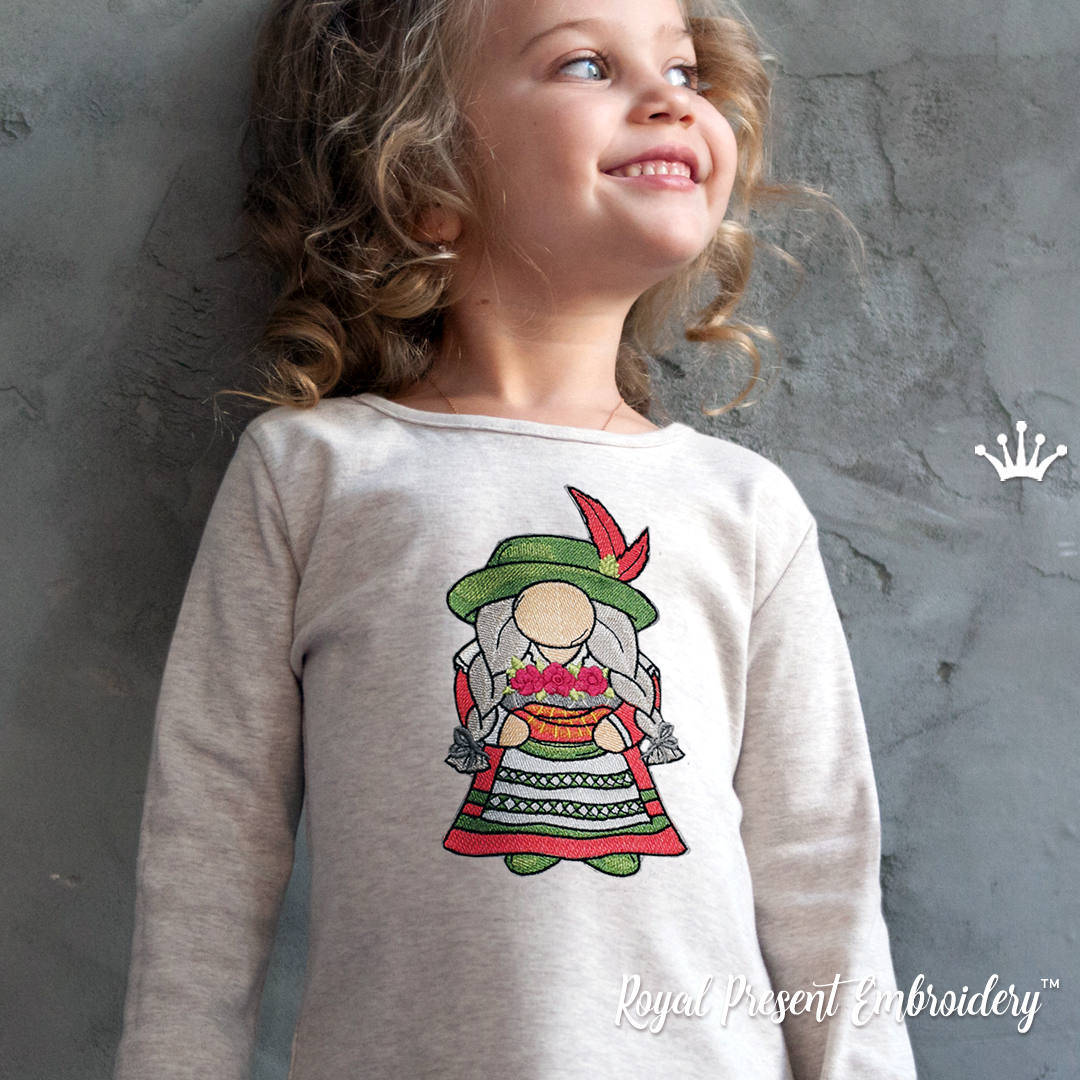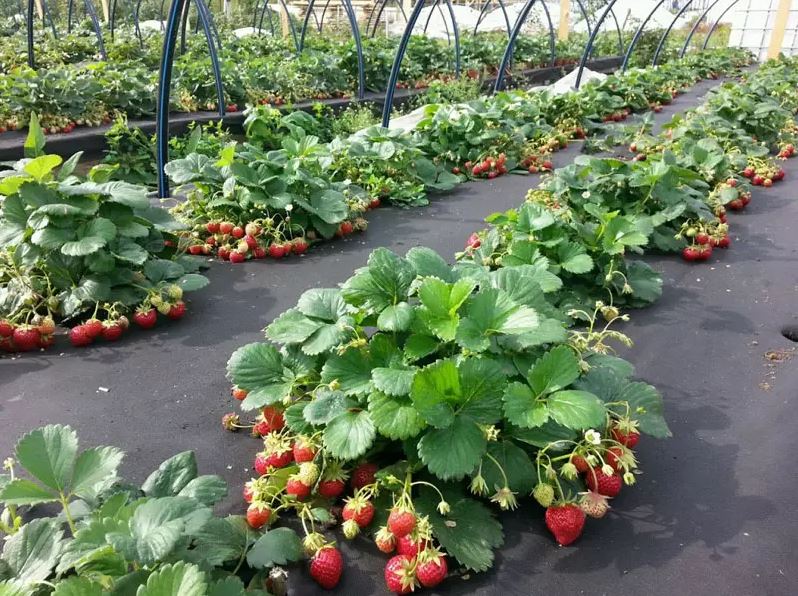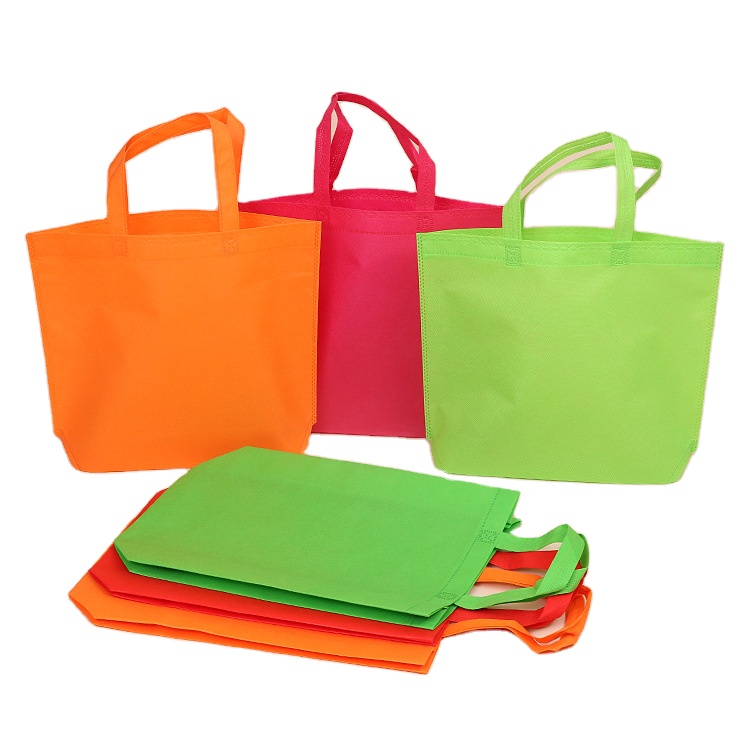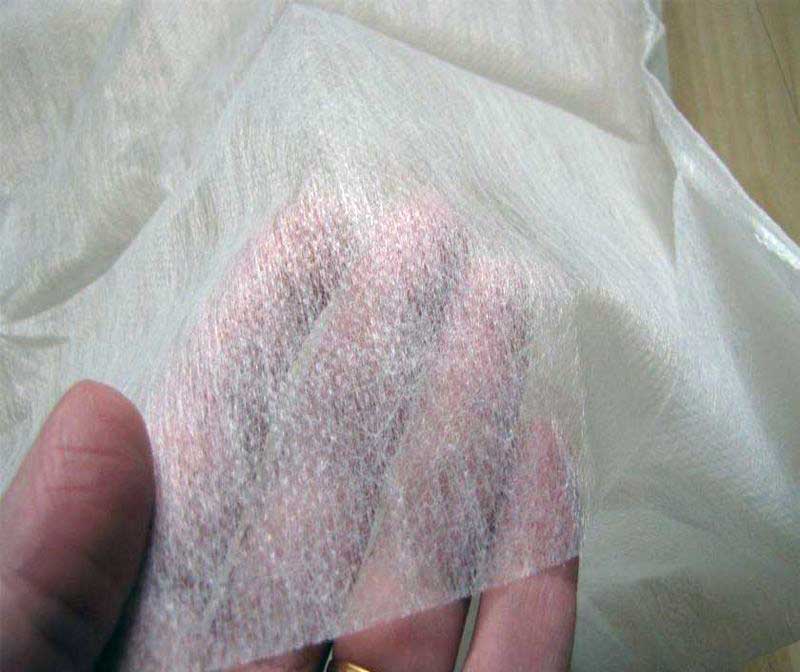
German Gnome Girl with sausage Machine Embroidery Design - 4 size
There's nothing like an embroidered patch to add some personality to your clothes. And making your patch is easier than you might think!
If you're an embroiderer, you've probably thought: "I want to make a patch, but I don't have any fabric for patches!" We feel your chagrin. It can be frustrating when you want to create something but don't have the materials you need. Luckily, there's a workaround. You can make a flexible patch on your embroidery machine with a few simple steps.
If you're in the market for fabric for patches to make machine embroidering, you may be wondering where to find it. It's not always easy to find a store selling consumables for machine embroidery.
Garden stores! You may be surprised to learn that there are more of these types of stores than stores that sell supplies specifically for needlework. So if you're having trouble finding what you need, don't worry - head to your local garden shop!

Spunbond Non-Woven Fabric - This type of landscape fabric can be used to cover plants and protect them from the elements. It comes in black, white, and multicolors. This article will discuss how to use Spunbond fabric for embroidery.

Spunbond is a fantastic material that has a wide range of uses. It is often used as a protective or backup material in the furniture industry, in garments, and even in manufacturing leather bags.

Thinner and lighter spunbond is ideal for intermediate padding, reinforcing seams, and adding extra rigidity to products. In addition, spunbond is often used as a packaging material or cover. For example, it can protect dishes, shoes, furniture, or outerwear. Spunbond is gradually replacing traditional and non-woven fabrics from the market due to its lower cost and higher physical and mechanical properties. So if you are ever in need of a versatile material that can be used for a variety of purposes, be sure to remember spunbond!

Now let's get back to our embroidery. We used a white Spunbond in three layers. Spunbond fabrics are made from various polymers, including polypropylene and polyethylene. The fabric can be made in different densities, depending on the desired use. For example, a high-density fabric is often used in medical applications, as it is less likely to tear or fray. A lower-density fabric is often used to manufacture filters and industrial wipes. As a result, spunbond materials are highly versatile and are used in various applications.
Here's a quick guide to stitching up your patch:
1. Hoop the spunbond.
2. Embroider the design. Use whatever designs you like. We used Gnome Design.

3. Take your scissors and carefully cut the fabric close to the embroidery.
4. Now, all you have to do is sew the patch onto your clothes, and you're all set!
Have fun experimenting with different designs and fabrics - the possibilities are endless!
If you're still thinking about how to make patches on your embroidery machine, the answer is simple: use spunbond! This fabric is incredibly versatile and can be used for various projects. Plus, it's easy to work with and doesn't require any special skills or techniques. So if you're looking for a quick and easy way to add some thin and flexible patches to your embroidery, spunbond is the perfect solution.

Author: Ludmila Konovalova
My name is Lyudmila Konovalova, and I lead Royal Present Embroidery. Embroidery for me is more than a profession; it is a legacy of my Ukrainian and Bulgarian heritage, where every woman in my family was a virtuoso in cross-stitch and smooth stitching. This art, passed down through generations, is part of my soul and a symbol of national pride.
Date: 03.07.2022



 Get Sign-In Link
Get Sign-In Link Login with Google
Login with Google Login with Facebook
Login with Facebook Login with Amazon
Login with Amazon Login with Paypal
Login with Paypal